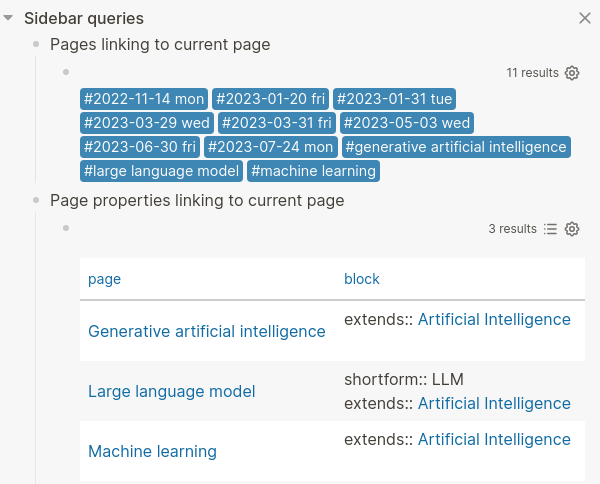Take both then ![]() . Embedded-page queries for a dynamic view of data and queries for quick searches (this is what I meant by “ad-hoc”).
. Embedded-page queries for a dynamic view of data and queries for quick searches (this is what I meant by “ad-hoc”).
The alternative query approach looks interesting, but probably clutters up the sidebar without an additional tabs plugin. Given context switching seems to be a requirement from many users, some native form of tab implementation like [Partial Done] Add tabbed windows to desktop client / Multiple instances of Logseq would make sense for me.
Edit::
This actually is quite cool. I included two queries: one gives me a short list of all pages linking to current page. The other shows me all page properties linking to current page to get an overview of page connections.
Pinning pages in the sidebar would be nice…
